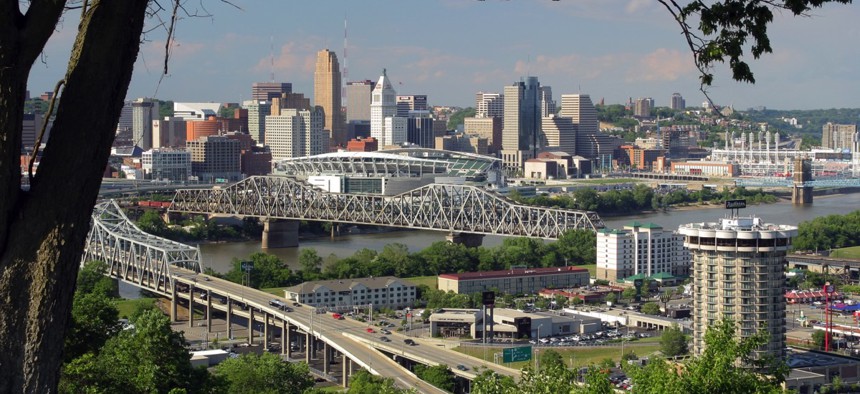Are Taxpayers Willing to Pony Up for Parks?

Cincinnati, Ohio
They were in Seattle and elsewhere. And counties from California to Ohio have proposed parks levies for the November ballot, whether it’s to simply maintain park space or add more in underserved areas.
When thousands of residents in Ohio’s Hamilton and Clermont counties vote on Nov. 8, they’ll be asked to consider at least one parks tax—possibly two for both county and local systems.
Hamilton County seeks to replace its expiring 15-year parks levy with one that’s $35 per year per $100,000 of home value, representing a $4.45 increase, reported the Cincinnati Enquirer. The current tax makes up 55 percent of Great Parks of Hamilton County’s budget, covering 20-some parks and conservation areas—17,000 acres of land and forests and 50 miles of streams.
Meanwhile, the Clermont County Park District is asking voters to approve a new 10-year, $17.50 per $100,000 of home value levy, on top of the $3.50 per $100,000 of home value tax it already collects without needing voter approval. The agency’s argument: the six-fold additional funds will allow the county to install new amenities like playgrounds and restrooms across the district’s 620 acres, the Enquirer reported.
Neither parks tax measure has seen any official opposition, and those come in addition to other proposed parks taxes in various townships within both counties.
"We are preserving land across the county," Hamilton County Executive Director Jack Sutton told the Enquirer. "It's important for our children and grandchildren."
Ohio’s counties aren’t the only ones paying for parks by increasing taxes, as Los Angeles County is also putting a parks levy to the voters.
In this case, Measure A on the ballot would tax improved property at 1.5 cents per square foot. Prior to proposing the measure, county supervisors commissioned a study showing millions of residents lacked access to neighborhood parks, pools, playgrounds and other recreational facilities—both a quality of life and health concern, according to the Los Angeles Times’ editorial board:
The first and obvious question about Measure A is why a tax for parks and other assets is needed in the first place, if those are basic services of local government that ought to be paid out of their general-fund budgets. The short answer is that those budgets and the property taxes that fund them are exhausted by the cost of basic services like police and fire protection. For decades, voters have agreed to special taxes to maintain and expand quality-of-life services such as libraries, museums—and parks.
In Los Angeles County, there can be no question as to the value of such assets or the need to maintain them. As the region’s population grows, open space is one of the things that makes life here not only bearable but enviable. Much of what is iconic about L.A., from the Malibu sand to the Hollywood Hills to the high desert to the San Gabriel Mountains, includes parks and trails—and parking, restrooms, scenic overlooks, instructional space and recreational facilities—that were built, and now are maintained and kept accessible, by county parks taxes.
The county intends for new money to be distributed more equitably, based on geography and interest expressed through public engagement, and the tax represents a move away from a flat per-parcel levy.
Estimates show the tax will generate nearly $94 million a year that will allow for new parks, facility upgrades and the recycling of rainwater, reported the Argonaut Online.
“Parks are a huge part of a healthy water quality resource system,” Meredith McCarthy, Heal the Bay programs director, told the Argonaut. “These problems of stormwater runoff and conservation are so interconnected, and the more we think about this in a multi-beneficial way the healthier our region will be.”
In 2014, Seattle voters approved the Seattle Park District with a budget of $47 million annually, primarily to deal with a maintenance backlog. The independent, metropolitan park district has the power to tax residents, currently at $0.33 dollars per $1,000 of assessed property value.
“It’s been a huge weight off the shoulders of the city,” Tyler Emsky, legislative assistant to Councilmember Debora Juarez, told the City Parks Alliance. “Without it, we definitely would have had to make very tough decisions down the road dealing with the level of service we’re giving to citizens and maintaining all that vibrant green space that’s so important to people’s lives here.”
Dave Nyczepir is a News Editor at Government Executive’s Route Fifty and is based in Washington D.C.
NEXT STORY: Smart City Development Is a Marathon, Not a Sprint






